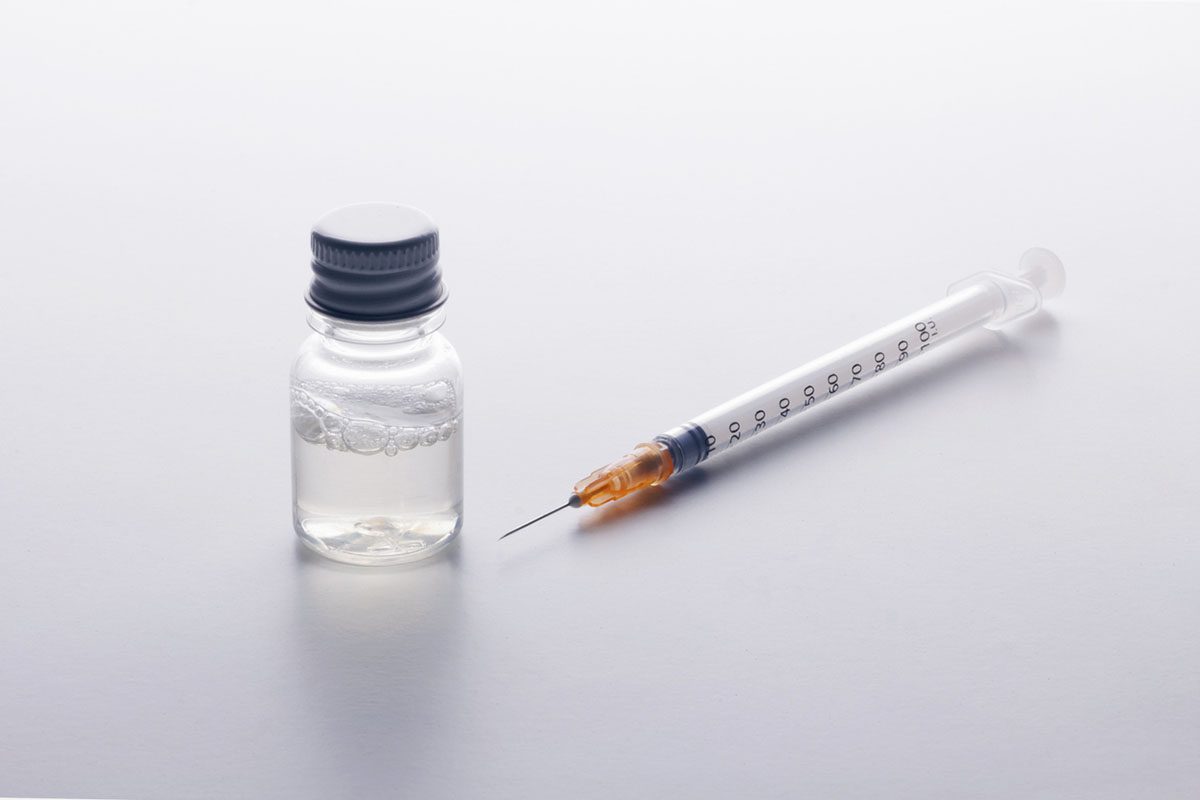Symptoms and Course of Psychosis After Methamphetamine Abuse: One-Year Follow-Up of a Case
To the Editor: The frequency of methamphetamine use has alarmingly increased in Iran, as in many other countries in recent years.1 The most recent survey on drug abuse in Iran, performed a couple of years ago, showed that only a minority of the Iranian substance abusers (3.6%) used methamphetamine.2 However, in the past 2 years and with the local production of methamphetamine, its price has dropped to less than one-fifth its former price. Methamphetamine use has increased several-fold in that time, and current nonofficial estimates suggest that methamphetamine is currently the second or third most widely used illicit substance in Iran, which means its use is in a real epidemic state. Moreover, many of the patients who abstain from opioids, including the patient described in the present case, turn to methamphetamine as an assumed “non-addicting” substitute. As a result, methamphetamine-induced psychosis has substantially increased and an overwhelmingly increasing number of these individuals are admitted every day to psychiatric emergency settings.3
Contrary to the current notion of the text revision of the Fourth Edition of the Diagnostic and Statistical Manual of Mental Disorders (DSM-IV-TR), some studies have suggested that methamphetamine-induced psychosis might last for more than 1 month.4-6 However, little is known about the course and treatment of the patients with chronic methamphetamine-induced psychotic syndrome.7
Here, we report a case of methamphetamine-induced psychotic disorder with protracted symptoms and its clinical course during 1 year of treatment and follow-up. We suppose that this patient could support the still unproven claim of chronic methamphetamine-induced psychosis and also provide some new evidence regarding the course of these patients.
Case report. Mr A, a 38-year-old single man, was admitted to the emergency setting of Iran Educational and Therapeutic Center of Psychiatry because of his suicide attempt in February 2009. He reported hearing voices who ordered him to kill himself. The patient started methamphetamine use in March 2008 at 1 “pack”/d (a pack is equal to one-tenth of a gram) and gradually increased his dose up to 2.5 packs before his admission. Four months after beginning to use the drug, he began to experience auditory hallucination and persecutory delusion. Initially, the hallucinations comprised voices of 1 or 2 people commanding or insulting him. Gradually, the number and frequency of voices increased, and the voices did not leave the patient even for a moment. He tried to self-medicate by increasing the dose of methamphetamine, which would bring him a temporary relief for 1 or 2 hours; after which, the voices would return more vigorously. Therefore, he might use the drug up to 4 or 5 times a day.
A mind-reading delusion also appeared 2 months after the emergence of psychotic symptoms. In September 2008, he attempted suicide by injecting opioids, but recovered without medical intervention. He then abstained from the drugs for 2 weeks, and the symptoms waned in 5 days without further treatments. However, after restarting the substances, symptoms recurred and continued until he was admitted following his second suicide attempt by hanging in February 2009.
His substance history began 5 years ago with dependence on “crack” heroin—a kind of crystallized heroin that is highly prevalent in Iran under that street name with higher purity than usual heroin—which he used every day and increased its dose until winter at the start of 2008, when he decided to discontinue the substance. About 20 days later (March 2008), he began to use methamphetamine.
During admission, he was treated with 10 mg/d of haloperidol and 4 mg/d of biperiden, and the symptoms remitted in 3 days. Haloperidol was reduced to 5 mg/d, and the patient was discharged. He discontinued the medications after discharge and started a daily use of crack heroin and an occasional use of methamphetamine. However, he experienced short periods of auditory hallucination (for 3-4 days) in April 2009, despite being abstinent from methamphetamine for several weeks. He sought treatment when one of these periods did not remit spontaneously and was accompanied by delusions. He was treated with risperidone 1 mg/d, which was titrated up to 6 mg/d. Symptoms remitted in 1 week, and the dose of risperidone was reduced to 3 mg in his following visit in July 2009. In October 2009, despite taking risperidone, he experienced a relapse of auditory and visual hallucination with a single dose of methamphetamine. When he was seen in the following week, psychosis had remitted and he complained of anxiety and depressive symptoms. The dose of risperidone was increased to 4 mg/d. Five weeks later, no psychotic symptom was present, and the patient was functional. He discontinued the medications in December 2009, and, in his last visit in late January 2010, his only complaint was insomnia.
Regarding opioid use, he decreased “crack” heroin to half of his former usage level after the end of May 2009 and abstained from it afterward with supporting medications. However, he began to use “crack” heroin (0.5 g/d) again in September 2009, which he discontinued after 1 month, subsequent to his visit in October with supporting treatments.
This report presents the course of a case of chronic methamphetamine-induced psychotic disorder during a 1-year follow-up. The patient experienced a short recurrence of psychosis while abstaining from methamphetamine, as well as another psychotic episode with methamphetamine use despite the fact that he was receiving antipsychotic medication.
Progressive qualitative alterations in the methamphetamine-induced symptoms, from a nonpsychotic to a prepsychotic to a frankly psychotic state,8 or increasing vulnerability to relapse of psychosis9 have been reported with increased duration of the drug use. The current case further shows progression of severity and complexity of symptoms, from 1 or 2 to several hallucinating voices and from non-Schneiderian to Schneiderian delusions, with longer duration of methamphetamine abuse. Moreover, spontaneously remitting psychotic symptoms that were closely related to methamphetamine abuse evolved to symptoms that were not immediately associated with methamphetamine use, and finally to symptoms that recurred even in the presence of antipsychotic treatment.
DSM-IV-TR predicts that symptoms lasting more than 1 month after the cessation of a substance should not be attributed to the abused substance. Instead, these chronic symptoms would be related to a primary mental disorder. However, Japanese researchers have long claimed that methamphetamine-induced psychosis does not obey this rule and could be a chronic disorder lasting months to years.10,11 However, neither genetic studies12 nor clinical observations7 have yet provided convincing evidence for the claim that chronic methamphetamine psychosis is distinct from schizophrenia. Although further studies are necessary to clearly define this issue, the existing evidence, including the current case, would cast a major doubt on, if not refute, the presumption of DSM-IV-TR. Documented cases with psychotic symptoms that would last longer than 1 month have a close association with methamphetamine abuse and are quite different from schizophrenia in terms of symptom severity and duration and prompt a need for revision in this section of the DSM-IV-TR.
Many questions arise: What are the appropriate treatments for patients with methamphetamine-induced psychotic disorder? How long should their antipsychotic treatment be continued? What is the best treatment for the accompanying anxiety and depressive symptoms? What will be the long-term course of these patients? These and many other related questions remain unanswered.
Methamphetamine psychosis has introduced itself as an exception among substance-induced psychotic disorders. Therefore, elucidation of its mechanisms could potentially provide new clues to the etio-pathogenesis of mental disorders in general, and schizophrenia in particular.
References
1. United Nations Office on Drugs and Crimes. World Drug Report 2009. Vienna, Austria: United Nations Office on Drugs and Crimes; 2009.
2. Drug Control Headquarters. Drug Control in 2008: Annual Report and Rapid Situation Assessment. Tehran, Iran: Drug Control Headquarters; 2009.
3. Shariat SV, Elahi A, Ahmadzad Asl M. Symptoms and course of psychotic symptoms in methamphetamine induced psychosis: a case series. Ninth Annual Meeting of the Iranian Psychiatric Association; Tehran, Iran; 2009.
4. Iwanami A, Kanamori R, Suga I, et al. Reduced attention-related negative potentials in methamphetamine psychosis. J Nerv Ment Dis. 1995;183(11):693-697. PubMed doi:10.1097/00005053-199511000-00004
5. Sato M, Numachi Y, Hamamura T. Relapse of paranoid psychotic state in methamphetamine model of schizophrenia. Schizophr Bull. 1992;18(1):115-122. PubMed
6. Yui K, Goto K, Ikemoto S, et al. Methamphetamine psychosis: spontaneous recurrence of paranoid-hallucinatory states and monoamine neurotransmitter function. J Clin Psychopharmacol. 1997;17(1):34-43. PubMed doi:10.1097/00004714-199702000-00007
7. Zorick TS, Rad D, Rim C, et al. An overview of methamphetamine-induced psychotic syndromes. Addict Disord Their Treat. 2008;7(3):143-156. doi:10.1097/ADT.0b013e318066d5e0
8. Ujike H, Sato M. Clinical features of sensitization to methamphetamine observed in patients with methamphetamine dependence and psychosis. Ann N Y Acad Sci. 2004;1025(1):279-287. PubMed doi:10.1196/annals.1316.035
9. Yui K, Ikemoto S, Goto K, et al. Susceptibility to episode recurrence in spontaneous recurrence of methamphetamine psychosis. J Clin Psychopharmacol. 2003;23(5):525-528. PubMed doi:10.1097/01.jcp.0000088919.02635.d7
10. Wada K, Fukui S. Residual symptoms in methamphetamine psychosis. J Ment Health (Ichikawa). 1991;37:161-168.
11. Iwanami A, Sugiyama A, Kuroki N, et al. Patients with methamphetamine psychosis admitted to a psychiatric hospital in Japan: a preliminary report. Acta Psychiatr Scand. 1994;89(6):428-432. PubMed doi:10.1111/j.1600-0447.1994.tb01541.x
12. Bousman CA, Glatt SJ, Everall IP, et al. Genetic association studies of methamphetamine use disorders: a systematic review and synthesis. Am J Med Genet B Neuropsychiatr Genet. 2009;150B(8):1025-1049. PubMed doi:10.1002/ajmg.b.30936
Author affiliations: Mental Health Research Center, Department of Psychiatry, Iran University of Medical Sciences, Tehran.
Potential conflicts of interest: None reported.
Funding/support: None reported.
Published online: October 28, 2010 (doi:10.4088//PCC.10l00959gry).
Prim Care Companion J Clin Psychiatry 2010;12(5):e1-e2
© Copyright 2010 Physicians Postgraduate Press, Inc.




